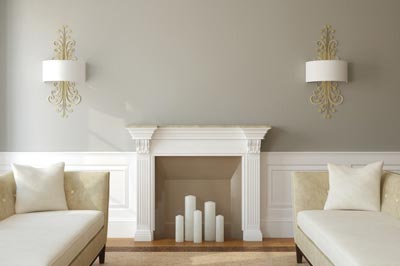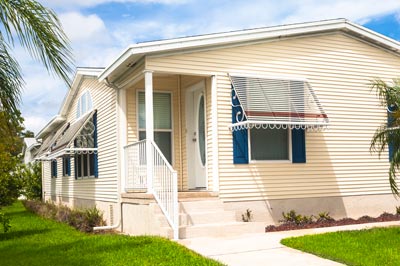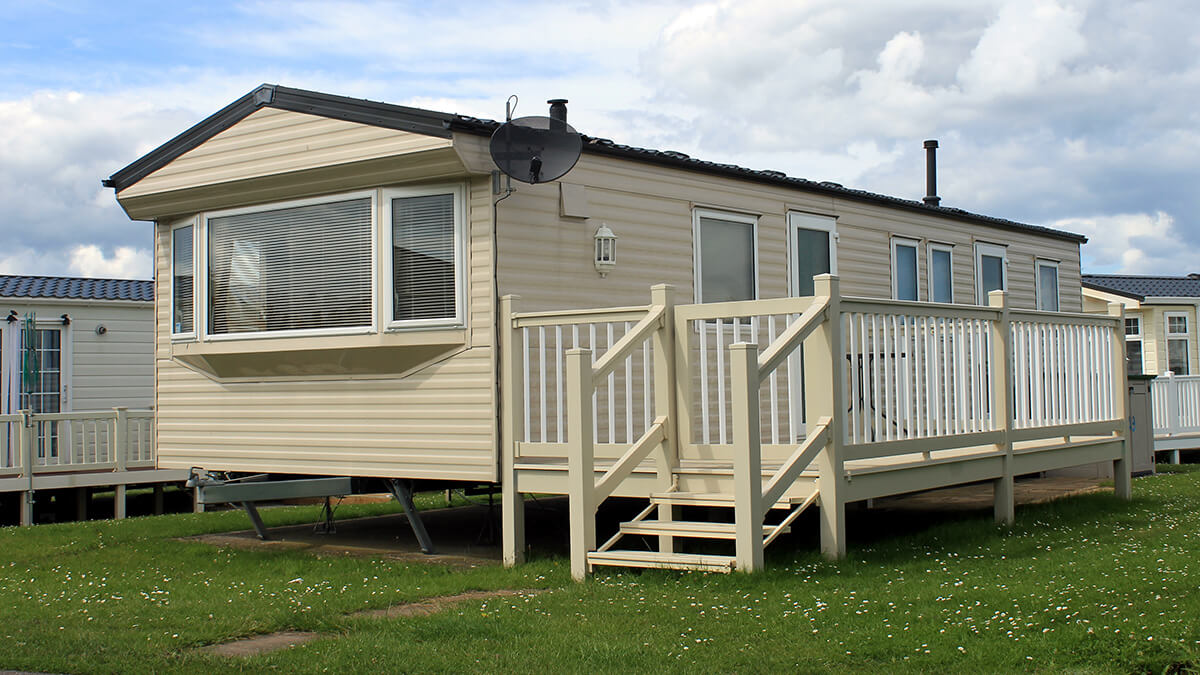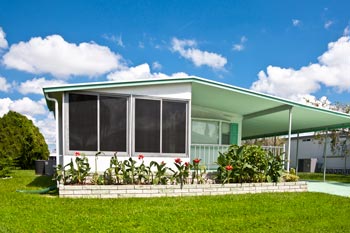Installing a mobile home fireplace

If your mobile home already has a fireplace or wood stove, it's a good idea to go look over these safety guidelines to confirm that it was installed correctly. If you plan to install a fireplace or wood stove, follow these safety guidelines carefully.
First, don't try to tackle this project yourself. While installation manuals usually provide all the instructions necessary for a manufactured home owner to install a wood-burning fireplace or wood stove, the consequences of a mistake are so disastrous, it's a task best left to experts.
It's a good idea to first check with your insurance company for their guidelines before installing these items. Your insurance policy may not cover damages if a fireplace or wood stove was not professionally installed. Plus, the manufacturer's warranty on the fireplace or wood stove may not apply unless the unit is installed by a professional.
Make sure you and the installer follow these safety requirements to prevent problems:
- If the fireplace or wood stove will be installed on a combustible floor, build a non-combustible hearth to protect the floor underneath the unit and in front of the opening.
- The hearth extension in front of the fireplace or wood stove needs to be made of noncombustible material. It should be extend at least 16 inches in front of, and at least 10 inches beyond each side of the unit.
- Equip the fireplace or wood stove with a built-in ash guard and spark-resistant screen, as well as metal or glass doors.
- Before you select a location for your fireplace or wood stove, consider the normal traffic pattern through the room, the location of doors and windows, and any construction obstacles above and below the unit.
- A corner might be the most economical location for your fireplace. Because of the slanted sides, a corner-installed fireplace takes up less floor space than one installed against a flat wall and projected into the room.
- Do not install the wood stove closer than 36 inches to any unprotected combustible wall. The adjacent walls should never feel uncomfortably warm.
- If you would like the wood stove to be closer than 36 inches to a wall, you may be able to reduce the clearance to 12 inches if you protect the wall with an approved, ventilated, non-combustible wall protector. Your insurance company may need to approve it as well. When installing the wall protector, space it out from the wall with screws and spacers. Make sure these spacers are placed so that they don't conduct heat directly into the wall stud.
- Supply the fireplace or wood stove with air from outside the home. It's important that a combustion air inlet provide this outside air. Make sure the inlet damper is located above the snow level. Also make sure the combustion air inlet does not drop ashes, which could be hot, under your home.
- Determine what type of stovepipe will be connected to your wood stove. It should be a double-wall steel stovepipe, which means the chimney pipe is shielded by another stovepipe at least two inches larger in diameter. A triple-wall pipe is even safer. If you use a double or triple-wall pipe, or if the wall is protected by an approved, ventilated, non-combustible protector, place the stovepipe at a minimum of 9 inches from the wall.
- It's important that your fireplace/wood stove flue pipe extends higher than all other combustion pipes and vents on your home's roof. The chimney must be at least 3 feet higher than that roof, and at least 2 feet higher than everything else within a 10-foot radius.
The National Fire Protection Association also makes these installation recommendations for manufactured homes:
- Install all fuel-burning appliances so the combustion system is completely separated from the interior atmosphere of the manufactured home. Combustion air inlets and flue gas outlets must be listed or certified as components of the appliance. The required separation should be obtained by either:
- Installing direct-vent system (sealed combustion system) appliances.
- Installing appliances within enclosures to separate the combustion and venting systems from the interior atmosphere of the home. The enclosure must not have any door, removable access panel, or other opening into it from the inside of the home. Any opening for ducts, piping, wiring and others must be sealed.
- Equip the fireplace or wood stove with an integral door(s) or shutters designed to close the fire chamber opening. It must include a complete means for venting through the roof, a combustion air inlet, a hearth extension and a way to securely attach the fireplace or fireplace stove to the home structure.
- Use a listed, factory-built chimney designed to be directly attached to fireplaces and wood stoves. The chimney needs to be equipped with a termination device and a spark arrester.
- A fireplace or wood stove, the air intake assembly, hearth extension and chimney must be installed according to the terms of their listings and the manufacturer's instructions.
- Make sure the combustion air inlet conducts air directly into the fire chamber and is designed to prevent material dropping from the hearth onto the area beneath the home.
- Do not install the fireplace or wood stove in a sleeping room.
- Have the hearth extend over the entire surface beneath a fireplace or wood stove, or beneath an elevated or overhanging fireplace.
- The label on the fireplace or wood stove should read: “FOR USE WITH SOLID FUEL ONLY.”
Once your fireplace or wood stove is operational, follow these safety tips from the National Fire Protection Association:
- Never use a flammable liquid to start a fire.
- An even-burning fire is preferable to a heavily stoked fire. Hardwoods seasoned for one year are recommended for use in fireplaces.
- Keep the area next to the fireplace free of easily ignited materials, such as newspapers, cardboard, fabrics, carpet or drapes.
- Between fires, allow ashes to cool, shovel into a metal can and dispose of properly. Watch out for ashes that are cool on the top and hot inside. Removing ashes allows the fireplace to burn cleaner and helps it heat more efficiently.
- Don't build a roaring fire just before going to bed. Plan the fire so it's nearly burned out by the time you're ready for bed. Check to see if the coals are still hot. If they are, leave the flue open for the fumes to escape.
- If your fireplace or wood stove does not have glass or metal doors, seriously consider adding this feature. Not only will this greatly improve the energy efficiency of your unit, it will also stop sparks from igniting surrounding materials. At the very least, you should have a metal screen in front of the fireplace or wood stove.
- Have the chimney and chimney pipes checked annually for creosote buildup. If necessary, have them cleaned. Creosote buildup is a major cause of chimney fires.
- Make sure you have a smoke detector located in the same room as the fireplace or wood stove, and test it regularly.


